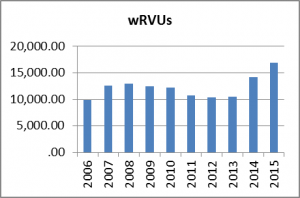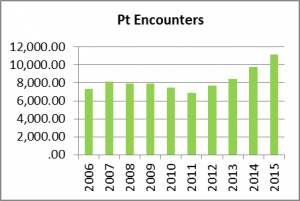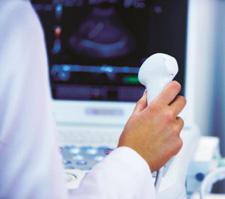Clinical
Division of Rheumatology
CLINICAL ACTIVITIES
Musculoskeletal Ultrasound
The Division of Rheumatology now offers diagnostic and interventional musculoskeletal ultrasound (MSUS) services. Ultrasound imaging allows for rapid, noninvasive diagnostic evaluation for a variety of inflammatory and noninflammatory musculoskeletal conditions affecting structures outside of the spine. Additionally, MSUS can be used to guide needle placement for arthrocentesis and joint or peripheral soft tissue injections, including procedures involving deeper joints such as the shoulder or hip.
The benefits of MSUS include:
- Avoidance of radiation exposure from X-rays
- Rapid and real-time diagnosis by clinicians skilled in musculoskeletal medicine
- Improved accuracy of needle placement for arthrocentesis or injections
- Greater patient comfort during procedures
Rheumatology faculty members Jeffrey Potter, MD, and Adam Carlson, MD, are both skilled in the use of MSUS, and have openings in their clinical schedules designated for MSUS-based diagnostic studies and procedures. MSUS is ideal for patients who are unable to undergo MRI for evaluation of soft tissue conditions, such as rotator cuff disease or other tendinopathies. It is also very helpful for evaluating patients with nonspecific joint complaints, and for differentiating inflammatory from noninflammatory conditions. Dr. Potter reports that he has found MSUS to be a “particularly powerful tool for assessing early inflammatory arthritis and crystalline arthritides.” Dr. Carlson and Dr. Potter have together developed an educational curriculum for training UVA Rheumatology fellows in MSUS.

Table 1
Expanded Clinical Activities
After remaining fairly level since 2011, the division experienced a 14.5 percent increase in wRVUs in FY 2015 compared to FY 2014 — the second-highest level of clinical productivity since 2008 [see Table 1]. Total patient encounters increased by approximately 19 percent year over year, and since 2011 have improved by 57 percent. FY 2015 was the highest-volume year for patient encounters in the last 10 years [Table 2].

Table 2 [“Pt.” = Patient]
Quality and Safety Initiatives
The division worked on a standardized work flow to improve recognition of glucocorticoid-induced osteoporosis and improve vaccination rates in patients on immunosuppressive medications. The division also implemented measures to optimize control of disease activity and improve recognition of cardiovascular risk factors in patients with rheumatoid arthritis.

